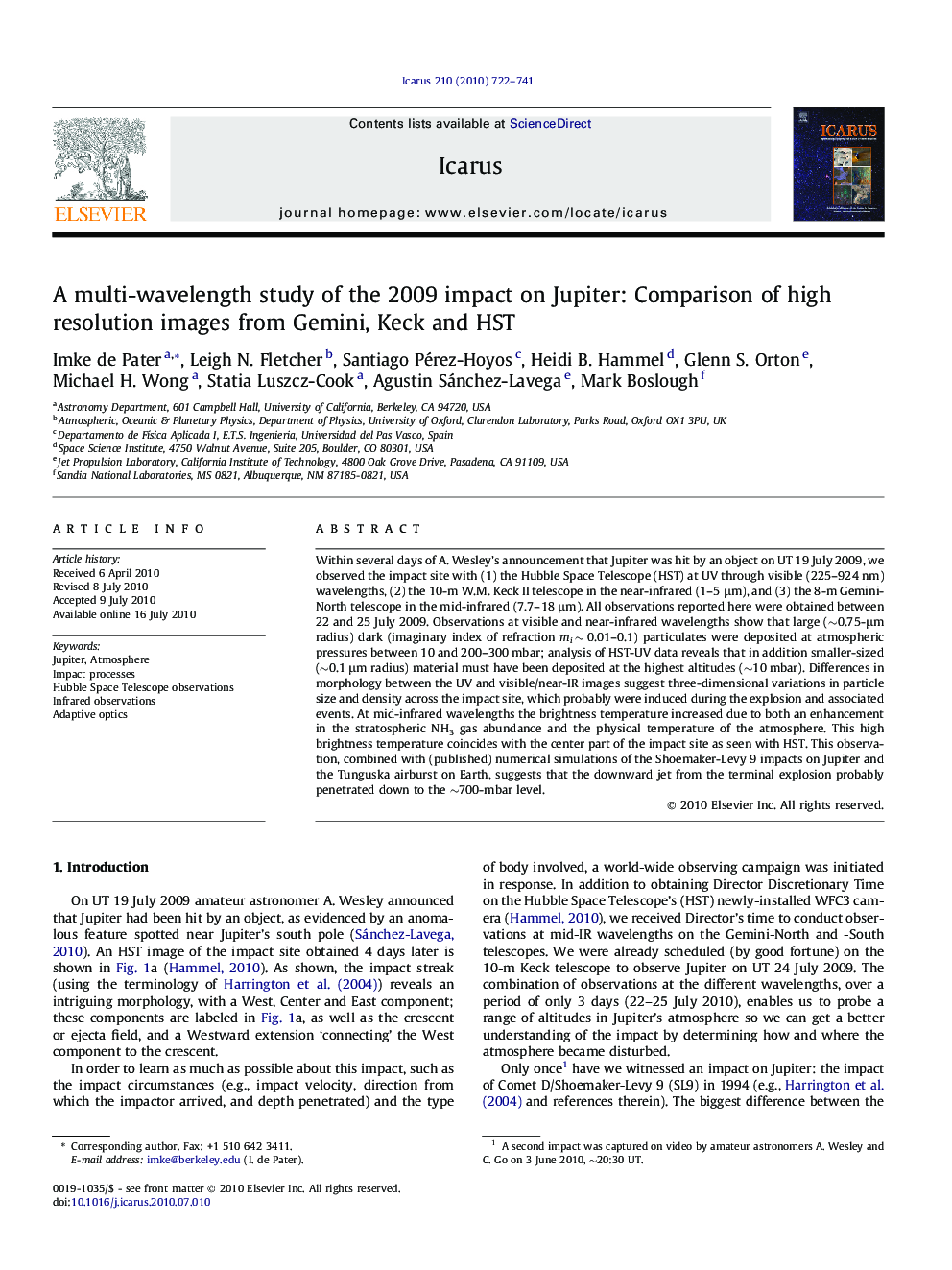| Article ID | Journal | Published Year | Pages | File Type |
|---|---|---|---|---|
| 1773622 | Icarus | 2010 | 20 Pages |
Within several days of A. Wesley’s announcement that Jupiter was hit by an object on UT 19 July 2009, we observed the impact site with (1) the Hubble Space Telescope (HST) at UV through visible (225–924 nm) wavelengths, (2) the 10-m W.M. Keck II telescope in the near-infrared (1–5 μm), and (3) the 8-m Gemini-North telescope in the mid-infrared (7.7–18 μm). All observations reported here were obtained between 22 and 25 July 2009. Observations at visible and near-infrared wavelengths show that large (∼0.75-μm radius) dark (imaginary index of refraction mi ∼ 0.01–0.1) particulates were deposited at atmospheric pressures between 10 and 200–300 mbar; analysis of HST-UV data reveals that in addition smaller-sized (∼0.1 μm radius) material must have been deposited at the highest altitudes (∼10 mbar). Differences in morphology between the UV and visible/near-IR images suggest three-dimensional variations in particle size and density across the impact site, which probably were induced during the explosion and associated events. At mid-infrared wavelengths the brightness temperature increased due to both an enhancement in the stratospheric NH3 gas abundance and the physical temperature of the atmosphere. This high brightness temperature coincides with the center part of the impact site as seen with HST. This observation, combined with (published) numerical simulations of the Shoemaker-Levy 9 impacts on Jupiter and the Tunguska airburst on Earth, suggests that the downward jet from the terminal explosion probably penetrated down to the ∼700-mbar level.
